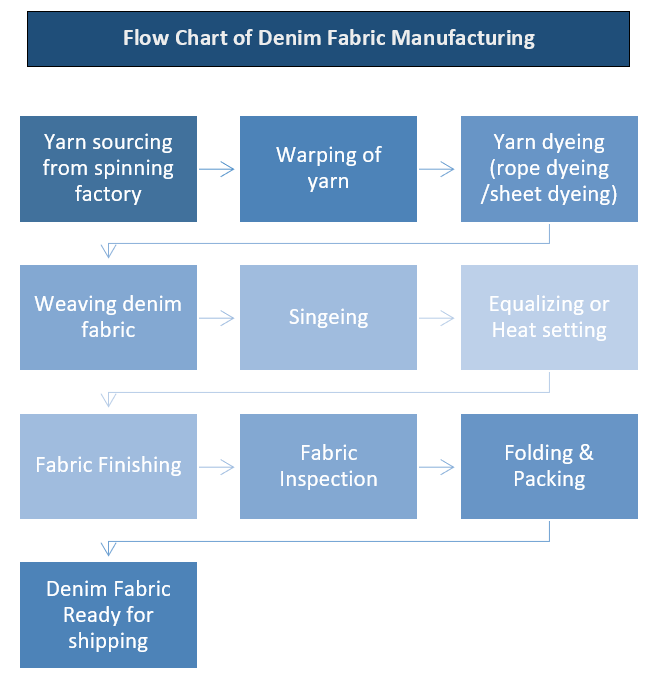"Fashion is mysterious, as a rule. Why are blue jeans a classic? You just hit on something that happens to be timeless and right." - Diane von Furstenberg
Denim has known to revolutionize the fashion industry than any other clothing. From being tough twill trousers worn by merchant sailors to becoming wardrobe-staple denim jeans have come a long way.
Despite the range of innovative materials available, denim remains one of the most versatile, durable, and highly sought-after fabrics on the market. It has evolved with time and still remains to have the same appeal. Several studies have attempted to provide a history of denim, such as Ian Finlayson’s (1990) Denim: An American Legend, a historical iconography of denim, and Miller and Woodward’s (2011) Global Denim.
However, do you know how it all started? In this article, our author Adita Banerjee has covered the following topics that will show how denim jeans were originated and have become part of our daily wear.
However, do you know how it all started? In this article, our author Adita Banerjee has covered the following topics that will show how denim jeans were originated and have become part of our daily wear.
- How were jeans born?
- Branding of Denim Jeans
- Evolution of Denim Jeans
- Denim Production in the modern age
- How do designers get the inspiration to include denim in the clothing lines?
- How does your favourite denim brand come to the front?
- Denim – Day and Night
How were jeans born?
Jeans have a long history, dating back to 1567 with the introduction of the word “Genoese” or “genes” to describe the tough twill trousers worn by merchant sailors from the Italian coastal city of Genoa. Weavers in Nimes, France tried to reproduce this fabric.This fabric was classified as a twill weave fabric using one coloured thread (basically indigo dyed) and one white thread with the weft passing under the warp threads. It had a unique feel and was a perfect fit for the working class people. Today we call it denim, the word denim comes from the French phrase "Serge de Nimes" which means serge from Nimes. The meaning of denim alluded to the working-class and only later became a fashion statement.
They became partners and on May 20, 1873, the two men received U.S. Patent 139,121 from the United States Patent and Trademark Office. The minors appreciated the new look of jeans which overcame the problem of ripped pockets. Strauss and Davis initially made jeans in two types of fabric, brown duck, and blue denim until the creation of the denim 501 styles in 1890 which paved way for a modernized version.
Many improvements were made like belt loops appeared in 1922 and zippers replaced the button fly. However, by 1890 this partnership ended and manufacturers like OshKosh B'Gosh, Wrangler, and Lee Mercantile appeared in the limelight.
Branding of Denim Jeans
In 1853 Levi Strauss moved to San Francisco to open a dry good store for people involved in the ‘gold rush'. He was dealing with the imported cotton fabric, denim when Jacob W. Davis, a tailor, who made functional items such as tents, horse blankets, and wagon covers asked Strauss to partner with him to patent and sell clothing reinforced with rivets. The reason was that Levi’s fabric was integral to them and Strauss had discovered a way to make it more durable by using metal rivets.They became partners and on May 20, 1873, the two men received U.S. Patent 139,121 from the United States Patent and Trademark Office. The minors appreciated the new look of jeans which overcame the problem of ripped pockets. Strauss and Davis initially made jeans in two types of fabric, brown duck, and blue denim until the creation of the denim 501 styles in 1890 which paved way for a modernized version.
Many improvements were made like belt loops appeared in 1922 and zippers replaced the button fly. However, by 1890 this partnership ended and manufacturers like OshKosh B'Gosh, Wrangler, and Lee Mercantile appeared in the limelight.
Evolution of Denim Jeans
In 150 years, jeans have gone through a lot of changes. In the late 1800s, the jeans were basically a "waist overall" and were commonly worn by western cowboys, miners, farmers in the US. Being cheap and sturdy it became a common feature among working men.In the early 20th century, denim was widely used by the military during World War-I and thus became associated with militarism.
During the mid-50s, the term jeans was used to distinguish it from other fabrics. Young people started wearing denim in the 1950s as a symbol of rebellion inspired by movies like “The Wild One” played by Marlon Brando and “Rebel Without a Cause” by James Dean.
The 1960s-70s was marked by bell-bottom widely featured in magazines while in1965, Limbo, a boutique in the New York East Village, came up with the idea to wash a pair of jeans to make them look used and worn out, decorated them with patches and decals.
In 1976, Calvin Klein showed blue jeans on the runway—the first designer to do so followed by Gloria Vanderbilt. They paved way for the acid-wash jeans in the 1980s.
Baggy, ripped jeans was all over the world in the 1990s and fashion houses such as Versace, Dolce & Gabbana and Dior also entered the jean market to promote their designs among which skinny jeans became a favourite in the 2000s.
Over the decades, the types and styles of jeans became stratified among the socio-economic group making jeans a part of life. Denim jeans has inherited unique features over the years and each has been modified by designers to showcase individual taste and style.
Denim Production in the modern age
The process of denim making is vigorous and time-consuming. The manufactured denim fabric is taken to the processing department for further steps. Designers use five elements to create a design that will stimulate the potential consumer to buy like colour, silhouette, drape, texture, and tone.While you read the history of denim jeans, It would be a good addition to knowing the denim fabric production processes and jeans manufacturing process.
Process Flow Chart of Denim Production:
The denim manufacturing process is explained in the detail in this article. Here I have shown the process flow in a chart.Process Flow Chart of Jeans Manufacturing
Jeans pant manufacturing is gone through a couple of processes which are shown in the following chart.
Related post: Sewing processes of denim jeans pant
How do designers get the inspiration to include denim in the clothing lines?
By 1950 denim was not only just a durable garment but also a way to express rebellion and fashion statement. Its popularity was mainly fuelled by the post-World War II economy and the emerging countercultures. Waist overall was the most common workwear replaced by straight fit jeans which went popular amongst the teenagers making it a noticeable change. The growing deindustrialization of America reduced the need to wear denim to work. The denim designers noticed this and launched denim as a fashion statement. Gradually denim jeans rose to be a part of haute couture.Know more denim trends over the year on Insider.
How does your favourite denim brand come to the front?
Denim jeans were born in 1873 in California with the effort of both Levi Strauss and Jacob W. Davis. Davis improved the strength and durability of Levi's denim workwear using metal rivets thus making it suitable for miners. The partnership, however, did not last longer thus paving the way for other competitors to emerge namely Wrangler (1905) and Lee (1911).Designer jeans rose to popularity with the brands such as Calvin Klein and Armani showcasing their premium collection. Adriano Goldschmied, the father of premium denim, popularized the 80's skinny fit while brands like Jack & Jones concentrated on men’s fashion. Paige, Citizens of Humanity, MUD, J Brand and Hudson were amongst the top brands to inculcate denim trends widely.
Hollywood helped romanticise the blue jean in the 1920s and 1930s by putting the trousers on handsome cowboy types played by the likes of John Wayne and Gary Cooper. Ginger Rogers and Carole Lombard inspired women to style denim indiscriminately. Denim soon gained popularity after being styled by many style icons over the years. Since Marlon Brando and James Dean wore denim jeans for the first time in their movies, jeans became a style statement for many celebrities thereafter. Teens then used jeans as a symbol of rebellious nature. For these reasons, some high schools banned the garment, which only served to further enhance its status. Thus, jeans succeeded to capture the young generation.
Denim – Day and Night
Denim pants are versatile piece that can be paired with anything. Denim travelled from Whitehouse to the Royal family with Jimmy Carter, Kate Middleton, and Meghan Markle featuring denim outfit. With time jeans became more casual and funkier. From skin-tight denim wore by Brooke Shields to baggy jeans by Jennifer Aniston the fashion world seems to embrace denim as a comfort wear. When it comes to the locals, brands like American Eagle, Pepe Jeans and many more have curated affordable denim jeans that can be wore all day long.Hollywood helped romanticise the blue jean in the 1920s and 1930s by putting the trousers on handsome cowboy types played by the likes of John Wayne and Gary Cooper. Ginger Rogers and Carole Lombard inspired women to style denim indiscriminately. Denim soon gained popularity after being styled by many style icons over the years. Since Marlon Brando and James Dean wore denim jeans for the first time in their movies, jeans became a style statement for many celebrities thereafter. Teens then used jeans as a symbol of rebellious nature. For these reasons, some high schools banned the garment, which only served to further enhance its status. Thus, jeans succeeded to capture the young generation.
Conclusion:
The whole story of the denim invention and how things changed over the year is explained on the Levi Strauss company website. You can get it at this URL - http://www.levistrauss.com/levis-history/
References:
- https://www.cottonworks.com/topics/sourcing-manufacturing/denim/denim-manufacturing-history/
- http://www.historyofjeans.com/
- https://www.vogue.in/content/the-history-of-denim-jeans
- https://www.hawthornintl.com/history-of-denim
- https://www.levistrauss.com
- https://issuu.com/www.rishabmanocha.com/docs/research_paper-denim_finishes
- https://denimhunters.com/history-of-jeans-1/
About the Author:
Adita Banerjee is pursuing her Graduation degree in Textile Technology from the Government College of Engineering and Textile Technology, Serampore. She loves writing content and reading books.



